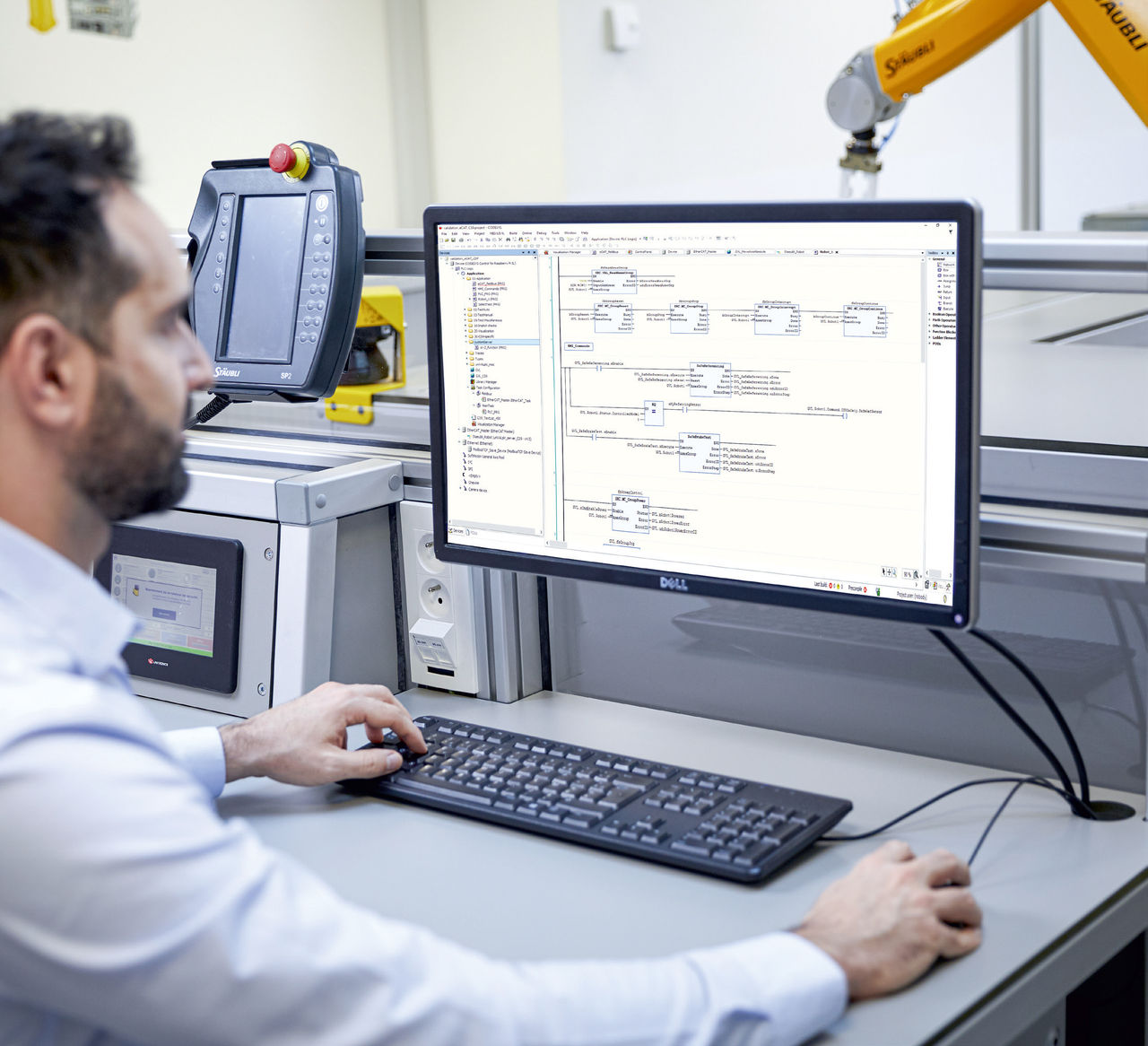- Europe
- Americas
- Asia and Middle East
- Africa and Oceania
SUCCESS STORY
Easy programming – sterile filling
On an innovative filling and sealing line developed by Zellwag Pharmtech, a Stäubli cleanroom robot is responsible for vial handling. On the control side, the six-axis robot can be easily integrated into the Siemens PLC via the uniVAL plc interface, guaranteeing maximum operating and programming convenience.
CUSTOMER BENEFITS
- Robot design allows a simplified plant layout
- Centralized programming for enhanced functionality and efficiency
- Rapid process adaptation and format extensions, even after installation
- Fewer subsystems and interfaces for streamlined programming and qualification
TASK
Filling hyaluronic gel
A Swiss plant construction firm has set the industry benchmark with its filling line for hyaluronic gel. At the heart of the system is a Stäubli Stericlean robot that fills syringes with the anti-aging substance under sterile conditions. The six-axis robot’s uniVAL plc interface allows for convenient and direct programming using the Siemens PLC.
Zellwag Pharmtech AG, a subsidiary of the Swiss-based Rychiger AG Group, has developed a fully automated filling and sealing system specifically for hyaluronic (HA) gel. The Z-810 R-2 machine works under cleanroom conditions to fill syringes with HA gel and then seal them. Both processes take place under a vacuum – an essential requirement, since injecting air under the skin is extremely dangerous and must be avoided.
SOLUTION
Sterile filling performed by a robot
With the acclaimed Stäubli TX2-90 Stericlean six-axis robot, a space saving system layout could be designed. A sealed tub containing 100 prepared and sterile syringes arrives at the robot’s working area. A linear system peels back the Tyvec foil, and a second linear system lifts the nest of syringes.
The robot grips the nest containing the syringes, rotates it 90 degrees, and presents it to the filling station. The syringes are then filled two at a time, with the gel being extruded from a nozzle. After 50 cycles, all of the syringes are filled. The ultra-dynamic Stericlean robot then places them back into the tub, which is transported by a conveyor system to further processing stations.
In this way, filling rates of up to 2,200 syringes per hour are achieved, with limits being set by the viscosity of the gel, not by the capabilities of the robot. The entire process takes place in a sterile environment – conditions under which the use of conventional robots would simply be impossible. Stäubli’s unique Stericlean robots, however, are perfectly at home in sterile and aseptic processing environments.
CUSTOMER USAGE
Integration in higher-level control system saves programming effort
Another advantage of the entire TX2 series is the uniVAL plc interface. It enables the robot to be configured using programmable logic controllers from well-known manufacturers, in this case a Siemens PLC. This eliminates the need for complex subsystems and interfaces from configuration to qualification.
Because Zellwag uses Siemes’TIA Portal, the workload is lightened even more. The Stäubli robot can be programmed on the Siemens engineering tool based on a TIA library. This centralized system not only greatly reduces programming input, but also enhances the filling line’s functionality and efficiency. A 30% time saving can be realized right at the start, when programming for the first syringe nest. For each additional container nest assigned to the system, this saving increases by as much as 50%.
With the Stäubli Stericlean robot, Zellwag has been able to implement a perfect solution for filling hyaluronic gel - under sterile conditions, in a compact space, with a high degree of flexibility and minimal programming effort. The robot’s hygienic,
pharma-compliant design and uniVAL plc interface provide the essential prerequisites. Another advantage of the multi-format system is its high degree of flexibility: Nested and sterile containers with different formats such as syringes, vials and cartridges made of glass or plastic can be processed on the same filling line.


